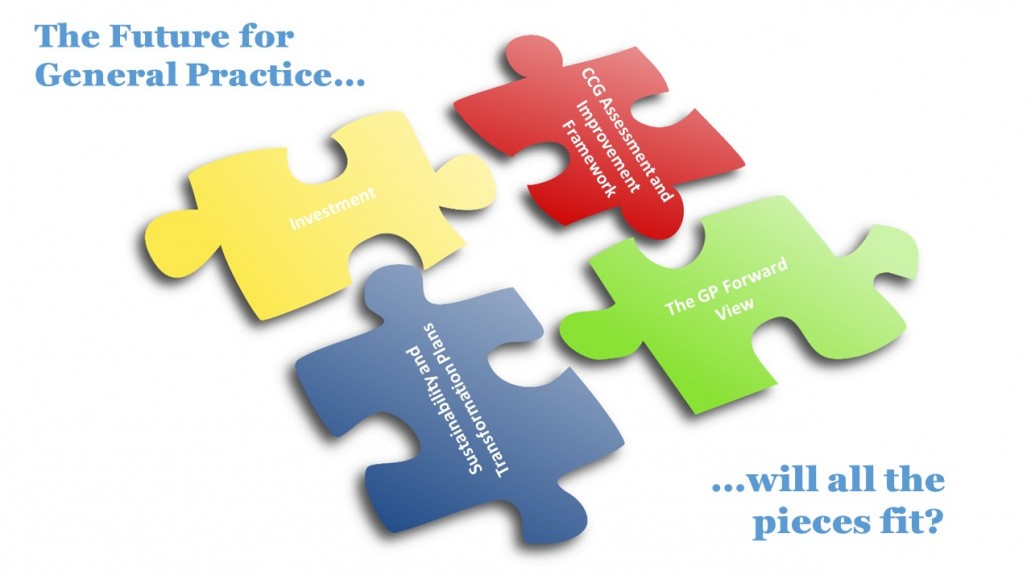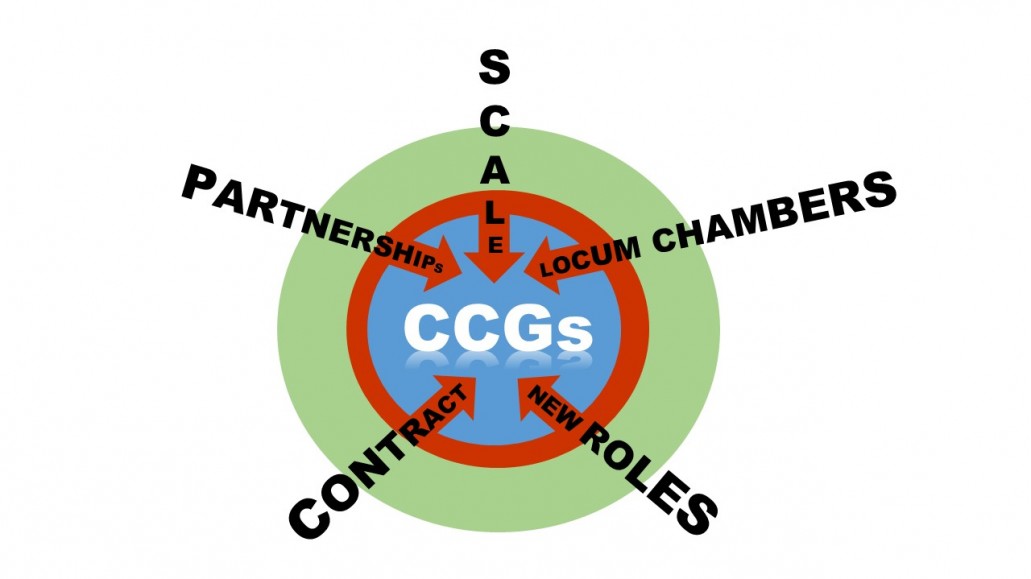I am worried. I worry that the General Practice Forward View (GPFV) does not fit with everything else that is going on. I worry that while on the one hand there is a small national team desperately trying to do the right thing by General Practice, most people haven’t even read the key document.
Recent events (and not just the obvious) have compounded my fears. Two things have happened. First the new CCG assessment and improvement framework has been published. It is not a fun read. The upshot of it is that there are 57 indicators across 29 areas by which CCGs are going to be assessed. One of these 29 areas is primary medical care, and it has a total of 4 indicators. These are:
- Management of long term conditions: unplanned hospitalisation rates for patients with chronic ambulatory care sensitive conditions.
- Patient experience of GP services: weighted percentage of people rating their experience of GP services as “fairly good” or “very good”.
- Primary care access: percentage of practices within a CCG where patients have the option of accessing pre-bookable appointments outside Monday to Friday 8.30am to 6.30pm. Access may be through a hub or federation rather than the individual practice.
- Primary care workforce: number of GPs and practice nurses (full time equivalent) per 1000 weighted patients by CCG.
I won’t waste the next 500 words explaining just why these in no way reflect the ambitions for General Practice outlined in the GPFV (but feel free to get in touch if you want the debate!). Suffice to say the measures by which CCGs are to be judged do not reflect the GPFV stated intentions around investment, workforce, workload, infrastructure and care redesign. Instead it is two steps backwards with tired measures that feel increasingly distant from the reality of most GP practices.
Second is the growing role of Sustainability and Transformation Plans (STPs). Recent guidance on STP allocations stated that this funding, “represents the full amount of funding expected to be available for local health systems from all sources in 20/21. They include an indicative fair share of the sustainability funding, primary care access and transformation funds, and other transformation funds including technology…. This includes taking forward the programmes set out in the General Practice Forward View and delivering extended GP access.”
The guidance goes on to say, “STPs will be the single application and approval process for being accepted onto programmes with transformational funding from 2017/18 onwards. Phasing of funding by areas in years 2017/18 – 2019/20 will be subject to consideration of STP plans submitted and subsequent decisions on how to target and deploy funding”.
The implication is that the financial plan for investment in General Practice actually sits within the local STP plan. While this contains a certain logic, the risk of the General Practice funding not finding its intended target becomes much higher. There is already guidance about the requirement of STP money to be passed through to acute providers, alongside a paucity of core General Practice provision representation in the development of STP plans in many areas.
The GPFV can’t sit in splendid isolation. It needs ownership across the system. It has to be the basis for how CCGs and primary care commissioners are assessed. It has to become the framework for local investment in, and the development of, General Practice. It has to materially impact local STPs. When we see the STPs we will find out exactly how reflective they are of the GPFV, and I really hope I will discover I have been worrying over nothing.




